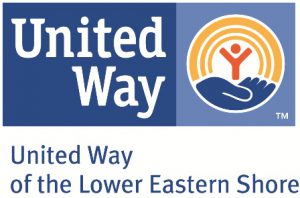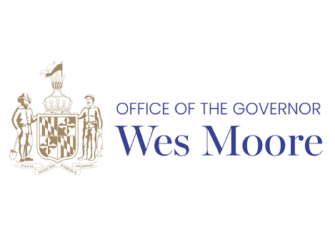
Salisbury, MD (November 5, 2020) – Before the COVID-19 pandemic, 39 percent of Maryland’s households, and 46 percent of those living in Dorchester, Somerset, Wicomico and Worcester Counties, were already one emergency away from financial ruin – a 10-year record high – setting the stage for the unprecedented economic impact of the crisis, according to the state’s latest ALICE (Asset Limited, Income Constrained, Employed) in Maryland: A Financial Hardship Study, recently released by United Ways of Maryland. While over 14 percent of these Lower Shore households live below the Federal Poverty Level (FPL), another 32% percent are ALICE households – earning more than the FPL, but not enough to afford basic household necessities like food, housing, transportation, health care, and childcare.
The ALICE Report for Maryland was made possible by eight United Ways in Maryland with generous support from Kaiser Permanente, BEACON at Salisbury University, Community Foundation of the Eastern Shore and additional statewide sponsors. This is a project in partnership with United For ALICE, a grassroots movement of nearly 650 United Ways in 21 states, corporations, and foundations, all using the same methodology to document financial need. ALICE Reports provide county-by-county and town-level data, and analysis of how many households are struggling, including the obstacles ALICE households face on the road to financial independence.
“The ALICE Report demonstrates how counties on the Lower Shore are among the poorest in Maryland, and this is based on pre-COVID data,” said Pam Gregory, President/CEO of United Way of the Lower Eastern Shore. “The new 2020 ALICE Report includes updated data specific to Dorchester, Somerset, Wicomico, and Worcester Counties, which provides detailed statistics and analysis that can be used to generate resources and guide advocacy. With many more households now struggling because of COVID, the ALICE Report is an even more vital resource to help address the barriers and inequities local families face.”
Franklyn Baker, President and CEO of United Way of Central Maryland, who guides the project for the Maryland Association of United Ways, also shared, “The pandemic has exposed exactly the issues of economic fragility that the ALICE Report reveals and for thousands that the impact of COVID-19 has suddenly thrust into the ALICE population. Of the tens of thousands of calls received through the 211 Maryland Helpline for food, healthcare, housing assistance, and other resources, many are from those who have not had to deal with these challenges before.”
Unlike today’s economy, from 2010 to 2018, Maryland showed steady economic improvements according to traditional measures. Unemployment in the state and across the U.S. fell to historic lows, gross domestic product (GDP) grew, and wages rose slightly. However, the cost of living rose, and worker vulnerability increased while wages in ALICE jobs were stagnate. Additionally, unemployment on the Lower Shore averages around 7%, significantly higher than the state average of 5.3%. As a result of these factors, the number of ALICE households increased by 57 percent in Maryland from 2007 to 2018. Of those, more than half are Black households. The data shows that while hardship is pervasive, the history of slavery and its ongoing legacy of systemic and institutional racism stigmatizes Black households uniquely. In every state, including Maryland, United For ALICE research documents the persistent and widening disparities in income and wealth between Black households and households of other races and ethnicities.
The ALICE in Maryland: A Financial Hardship Study provides insight into the budget minimums needed for households to reach both financial survival and stability, based on the costs of basic essentials. The baseline, called the ALICE Threshold, represents the average income that households need in order to afford the essentials for financial survival in their county.
The report shows that in 2018, the cost of survival on the Lower Shore ranged annually from $24,867 for a single adult, to $27,993 for a senior citizen and $70,065 for a family of four with an infant and a preschooler. Putting this in perspective, the median hourly wage for cashiers, the most common occupation in Maryland, was $10.67, or $21,340 per year, if someone is working full-time, year-round. Though minimum wage in Maryland has been raised to $11 in 2020, that is still an income of $22,000 for a full-time, year-round worker – less than any of the budgets.
This mismatch between wages and costs is revealed by a new measurement debuting in this report, called the ALICE Essentials Index. This Index chronicles how the cost of housing, food, transportation, health care, childcare, and a smartphone plan rose at nearly twice the rate of inflation, as measured by the Consumer Price Index. The result is that in 2018, two parents on the Lower Shore working full time needed to earn a combined hourly wage of over $35 in order to afford the Household Survival Budget for a family of four. During the last decade, the number of low-wage jobs in the state grew by 61 percent, accounting for the largest number of jobs in Maryland in 2018. The actual cost of household basics in every county in Maryland is far above the FPL for all household sizes and types studied.
“The ALICE Essentials Index shows that, through no fault of their own, ALICE families have been priced out of economic stability, setting the stage for the scope of this crisis,” said United For ALICE National Director Stephanie Hoopes, Ph.D. “Using the Consumer Price Index alone to measure inflation provides an incomplete picture of the cost of living, severely underestimating the mounting financial pressures on ALICE families.”
The ALICE Report has also helped to inform further research into the benefits cliff—a term used to describe the loss of public benefits resulting from small increases in earned income. In partnership with the University of Baltimore Schaefer Center for Public Policy and Kaiser Permanente, Maryland United Ways have also released The Impact of the Benefits Cliff study, which found that 9.4 percent of the Maryland population lives on incomes below 100 percent of the FPL, and another 12.3 percent have incomes below 125 percent of the FPL. Public assistance programs are based on the FPL, but the FPL is not enough for a household to cover even its most minimal costs. That means that assistance programs serve far fewer households than actually need assistance, even in a strong economy, and that a small increase in wages of only $100 per year for example, can lead to hundreds of dollars in lost benefits per month and severe financial hardship.
“We at BEACON, rely on the ALICE Report to better understand the economic situation of this significant portion of our population. The report and detailed data are a great asset to local decision makers, allowing them to identify some of the economic pain points for ALICE households so they can come together to develop opportunities and solutions that can assist them in reaching financial stability,” said Dr. Sarah Guy, Associate Director of BEACON, who also serves on the Maryland ALICE Research Advisory Committee.
The report calls for stakeholders across all sectors to use its findings to remove obstacles to financial stability, identify gaps in community resources, and build data-driven solutions to help ALICE families achieve economic stability, bolstering the state’s economy overall.
For more information or to find data about ALICE in local communities, visit www.uwles.org/ALICE or UnitedForALICE.org/Maryland. Opportunities for training on the ALICE Report and Benefits Cliff study are available through United Way of the Lower Eastern Shore by contacting Claire Otterbein, Community Impact Manager, at claire@uwles.org.



